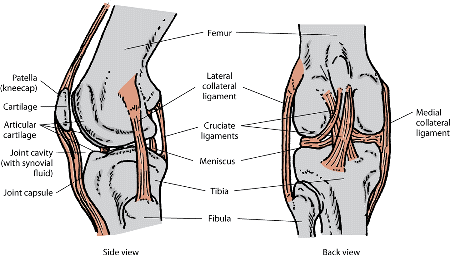Components of the Musculoskeletal System in Dogs
- Bone, Joint, and Muscle Disorders of Dogs
- Introduction to Bone, Joint, and Muscle Disorders of Dogs
- Components of the Musculoskeletal System in Dogs
- Overview of Musculoskeletal Disorders and Diseases in Dogs
- Lameness in Dogs
- Congenital and Inherited Disorders of Bones, Joints, and Muscles in Dogs
- Disorders Associated with Calcium, Phosphorus, and Vitamin D in Dogs
- Other Joint Disorders in Dogs
- Muscle Disorders in Dogs
- Bone Disorders in Dogs
- Sarcocystosis in Dogs
Bones provide rigid structure to the body and shield internal organs from damage. They also house bone marrow, where blood cells are formed, and they maintain the body’s reservoir of calcium. Old bone tissue is constantly replaced with new bone tissue in a process called remodeling. This helps keep the bones healthy.
Bones come together to form joints. The type of joint formed determines the degree and direction of motion. For example, joints with a ball-and-socket formation allow for rotation, while hinge joints only allow bending and straightening. Some joints do not move at all. In a joint, the ends of the bones are covered with cartilage, which is a smooth protective tissue that helps reduce friction as joints move.
There are several different types of muscles in the body. Two of these kinds, skeletal muscle and smooth muscle, are part of the musculoskeletal system. Skeletal muscles are responsible for posture and movement. They are attached to bones and arranged around the joints. Smooth muscle helps facilitate many processes in the body such as the flow of blood (by surrounding arteries) and the movement of food along the digestive tract.
Tendons are tough bands of connective tissue made up mostly of a protein called collagen. They do not stretch. Tendons attach each end of a muscle to a bone. They are located within sheaths that allow them to move easily. Ligaments are also tough cords formed of connective tissue, but unlike tendons they can stretch to some extent. Ligaments surround joints and help to support and stabilize them. They also connect one bone to another.
Resources In This Article
- Bone, Joint, and Muscle Disorders of Dogs
- Introduction to Bone, Joint, and Muscle Disorders of Dogs
- Components of the Musculoskeletal System in Dogs
- Overview of Musculoskeletal Disorders and Diseases in Dogs
- Lameness in Dogs
- Congenital and Inherited Disorders of Bones, Joints, and Muscles in Dogs
- Disorders Associated with Calcium, Phosphorus, and Vitamin D in Dogs
- Other Joint Disorders in Dogs
- Muscle Disorders in Dogs
- Bone Disorders in Dogs
- Sarcocystosis in Dogs






